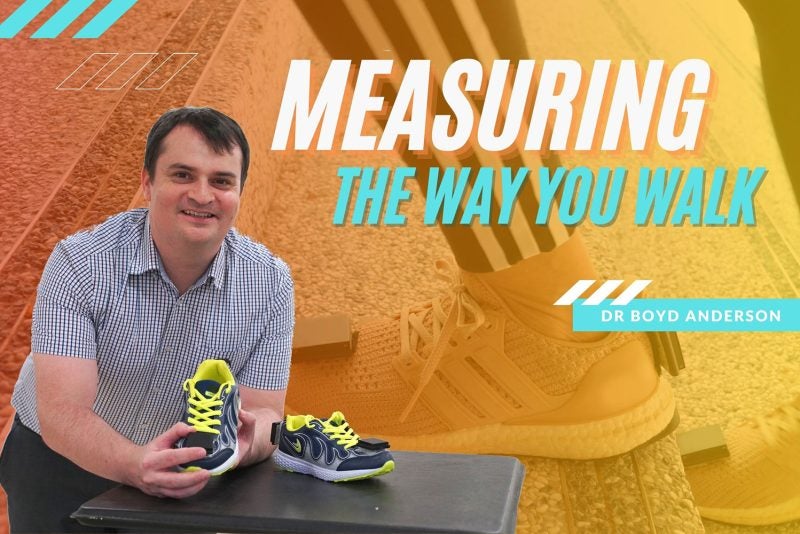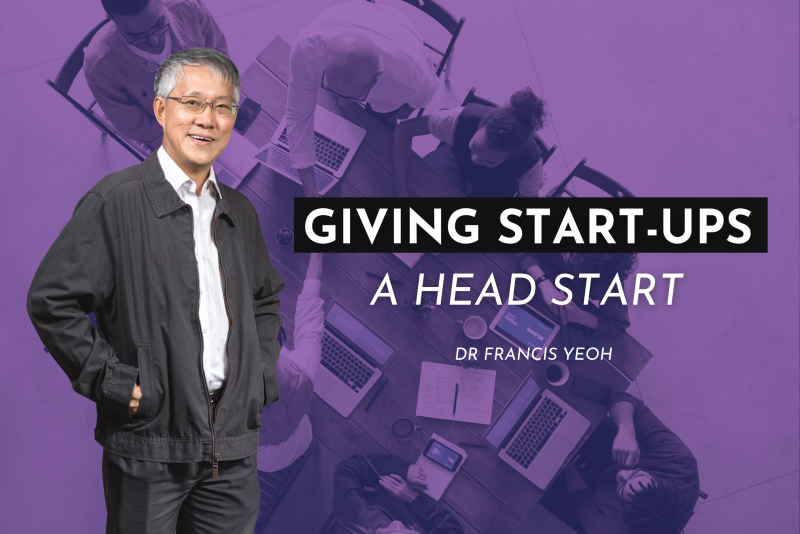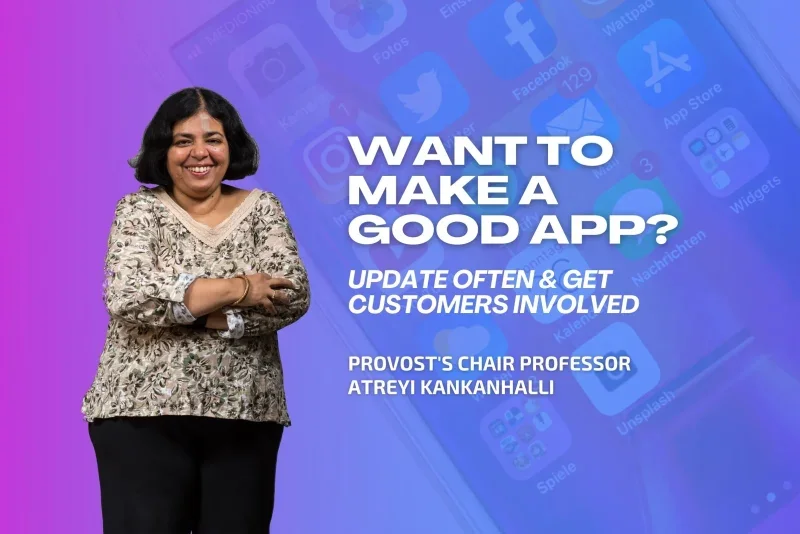In 2015, Shi Ying Lim was working on her Ph.D. in Austin, Texas. As part of her work, she studied a budding health IT startup that was trying to develop an app to help patients with chronic diseases.
The aim was to help patients — who were living with conditions such as diabetes or had just been discharged after surgery — better manage their care. Among other things, the app would send patients reminders to take their medication or change their dressing, and to contact their doctors if complications arose.
“The startup was trying to sell the app to hospitals, but it was having a lot of trouble doing so,” recalls Lim, now an assistant professor at NUS Computing. “Yet, a few other startups out there were doing relatively well in the hospital market, which made me think: is it a problem with the customer, the market, the product, or the startup itself?”
As she delved deeper into the problem, Lim decided to study a concept that is considered the ‘holy grail’ of entrepreneurs worldwide: product market fit. When a startup offers a product or service that matches the needs of a focal customer group, it is said to have attained product market fit. “Practitioners will often tell you that it’s critical for startups to do they can to get to product market fit,” says Lim. “Because if you don’t have it, you’re going to fail.”
But ask someone to expand upon how startups can actually attain product market fit, and they will most likely falter. For instance, renowned entrepreneur and investor Marc Andreessen once said, “You can always feel product market fit when it’s happening.”
Such elusiveness, however frustrated Lim. Despite product market fit being such a central notion in the startup world, the academic studies examining how to achieve this critical outcome were few and far between.
One product, five startups
So Lim decided to take matters into her own hands. She enlisted the help of Douglas Hannah, a management professor who studies strategy at Boston University. Together, they launched a study aimed at answering a key question: how do digital entrepreneurs identify product market fit in nascent markets?
Using the startup Lim was studying as a springboard, the pair identified four other U.S.-based startups that were developing similar health management apps. They then set about amassing all the information they could on each firm — collecting press releases, media articles, and blog posts; trawling through archived chats on the workplace messaging platform Slack; and conducting interviews with the startup’s founders, staff, investors, and customers.
“Basically, we were trying to map each startup’s evolution over time — the choices they made and the outcomes of those choices,” explains Lim. With this information, they hoped to determine how each startup went about on their quest to achieve the ‘holy grail’ of finding product market fit, from identifying and refining a product, choosing and securing customers, to scaling up their businesses.
To assess whether a startup attained product market fit, the pair looked at the types of customers acquired, the pedigree of customers, revenue raked in, and funding secured.
If the task of collecting copious amounts of data and piecing them together to try to figure out each startup’s journey seemed Sisyphean in nature, it was. “It was very easy to get lost in the weeds,” admits Lim.

To converge, diverge, or shape?
Their efforts, however, were rewarded with illuminating insights, which they presented at the Academy of Management’s annual meeting in August 2019. There are three different paths that entrepreneurs can take to achieve the coveted end goal of product market fit, Lim and Hannah discovered.
“They are all viable paths but with different tradeoffs that need to be carefully managed,” explains Lim.
One path was the shaping path. She cites the example of a firm, called Acute Health*, that they studied. Founded in 2010 by a doctor, Acute Health was resolute in its end product and target market. “They developed the product because of a need they had so they were very clear about what they wanted and which customers they wanted to serve,” says Lim.
“But they also knew the incentives weren’t all there for the stakeholders to adopt their app,” she says. To remove those barriers, Acute Health worked hard to change incentives at numerous levels — convincing patients to use their app to monitor their health and rate their satisfaction with their doctors. The latter, in turn, would get increased referrals and thus generate more revenue for hospitals.
The startup even conducted clinical trials and used the results to lobby the U.S. government, arguing that post-surgery management apps such as theirs positively impact citizen health and result in long-term cost savings for healthcare systems.
“This startup really sought to shape the landscape so that hospitals and doctors would be incentivised to use their product — they basically didn’t take no for an answer,” says Lim. As a result, Acute Health achieved product market fit, was acquired in 2018, and became “a Silicon Valley darling.”
The second path Hannah and Lim identified was a convergent one. In their study, the two startups that took this path began with a single product in mind, one that they iteratively refined through sequential experimentation across markets. For example, when the founder of the startup New Health first began, he chose to market his app to hospitals. But having failed to find success there, he moved on to other customer segments such as insurance companies, GPs, and pharmaceutical companies.
“New Health was very methodical about it,” Lim says, which is a key benefit of the convergent approach because doing so provides insight into the cause and effect of changes while being less resource-intensive than the shaping path. New Health, like Acute Health, also succeeded in achieving product market fit.
The third path, by contrast, is a divergent one. Founders begin with a vague notion of what they want their product to be and the markets they wish to serve. They spend time exploring multiple alternatives simultaneously across numerous markets and product features. “These are people who say, ‘I want to hedge my bets, invest minimally in each market and see which one takes off. And then I’ll invest in making a product that fits with that market segment,’” explains Lim. It is the approach that HealthCom, the startup she was initially studying, chose to adopt — albeit unsuccessfully.
“At first, I thought the startups on the divergent path would do a lot better, as they avoid over-customising a product for a non-viable market. And that flexibility is a good thing because we tend to think of tech as very malleable and adaptable. For example, new features can be easily coded for new customers and subjected to alpha or beta testing,” says Lim.
“But then I realised having this flexibility might actually be bad for a startup as they end up facing a search problem that is more complex and less bounded than otherwise,” she says.
Still, the divergent path can lead to successful product market fit, as evidenced by the startup DMHealth. Compared with HealthCom, DMHealth was much more selective in its decisions to only design product features it believed could be redeployed across markets, which made a crucial difference to the end outcome.
It was these, and other, insights that allowed Lim and Hannah to understand the tradeoffs associated with each path. Importantly, they realised that key to finding product market fit is having a balance in focus and commitment. In nascent markets, startups need to commit resources to specific opportunities to learn and differentiate between market-specific and customer-specific issues. Commitment also improves their ability to attract partners by signaling their dedication to the market. But at the same time, too narrow a focus could also lead the startup to miss valuable opportunities and be subjected to the uncertain dynamics and viability of a narrower market.
She reflects, “All three paths can get you to product market fit, but having a focus allows you to learn from your experiments and search more efficiently. This is especially important for a startup with resource constraints, particularly as they have to juggle the search for market and product.”
*All startup names were masked for privacy in Lim’s study
































